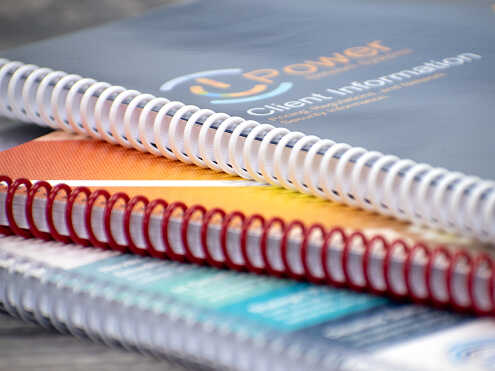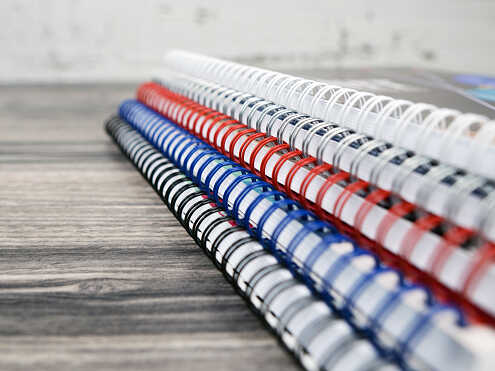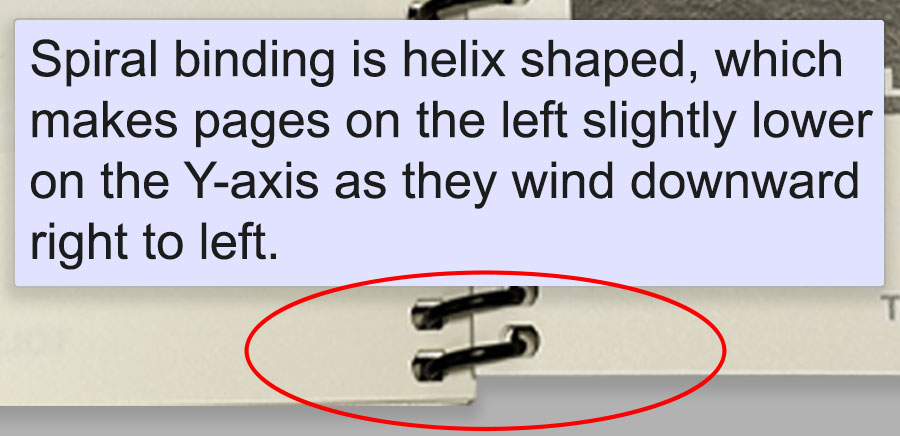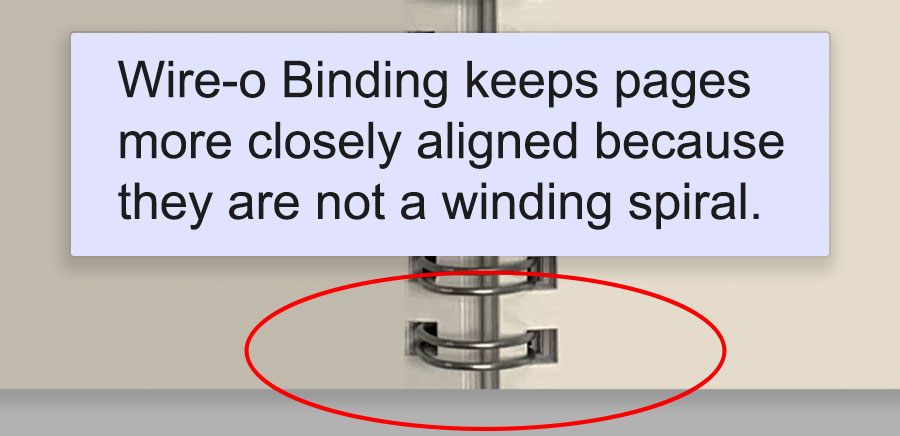Spiral Binding vs. Wire-o Binding: Which is Better?
Compare the pros, cons and common uses for these two popular booklet binding options.
DocuCopies.com
Whether you're printing books for a formal setting, producing sales and marketing collateral, or just making something unique for family and friends, it's important to choose a binding method that suits the intended use.
Two common book binding options are spiral binding and wire-o binding. While they have certain similarities, each offers distinct advantages and is better suited for different applications.
Below is a comprehensive guide to help you determine the best binding choice for your custom book project.
Overview of Spiral and Wire-o Binding Methods:
Spiral Binding
- Material: Flexible plastic filament formed into a continuous spiral. Very durable and crush resistant.
- Appearance: Available in a wide array of colors.
- Functionality: Allows pages to turn 360 degrees and lie completely flat.

Wire-O Binding
- Material: Double-loop metal wire clamped closed inside the back cover.
- Appearance: Offers a sleek, professional look, also available in many colors.
- Functionality: Pages lie flat when the book is open, but do not quite turn around a full 360 degrees due to the binding's closure.

Common Uses:
Spiral Binding
- Cookbooks
- Children's books
- Product manuals and user guides
- Workbooks
- Training books
Wire-O Binding
- Corporate reports
- Directories
- Planners
- Portfolios
- Diaries and journals
Pros and Cons:
Spiral Binding
- Highly durable and resistant to crushing; coils spring back into shape.
- Safe for all ages due to absence of sharp edges.
- Offers extensive color customization.
- Cost-effective for large print runs.
- Ideal for documents requiring frequent handling.
- May not align pages perfectly when opened, causing slight "drop" on left-side pages.
- Generally perceived as less formal compared to metal bindings.

Wire-O Binding
- Provides a professional and polished look.
- Pages lay flat, making it suitable for business presentations.
- Ideal for documents requiring precise alignment across page spreads.
- Prone to bending if mishandled.
- The closure may loosen with heavy usage or rough handling, but can be squeezed shut again by hand.
- More costly than spiral binding.
- Pages do not turn a full 360°.

Other Considerations:
- Budget: Spiral binding is more affordable.
- Usage: For documents that will be frequently handled, spiral binding offers greater durability.
- Presentation: For formal presentations or professional materials, wire-o provides a more refined appearance.
- Functionality: If you need pages to turn completely around, spiral is preferable.
Conclusion:
Both spiral bound books and wire bound books have their unique advantages. As for which one is better, this depends on the specific needs of your project. Consider factors like durability, appearance, and functionality. For casual, frequently handled booklets, spiral binding is generally the more practical and affordable choice. But with formal presentations or materials where aesthetics take the front seat, wire-o binding may be the best choice.

 Processing...
Processing...